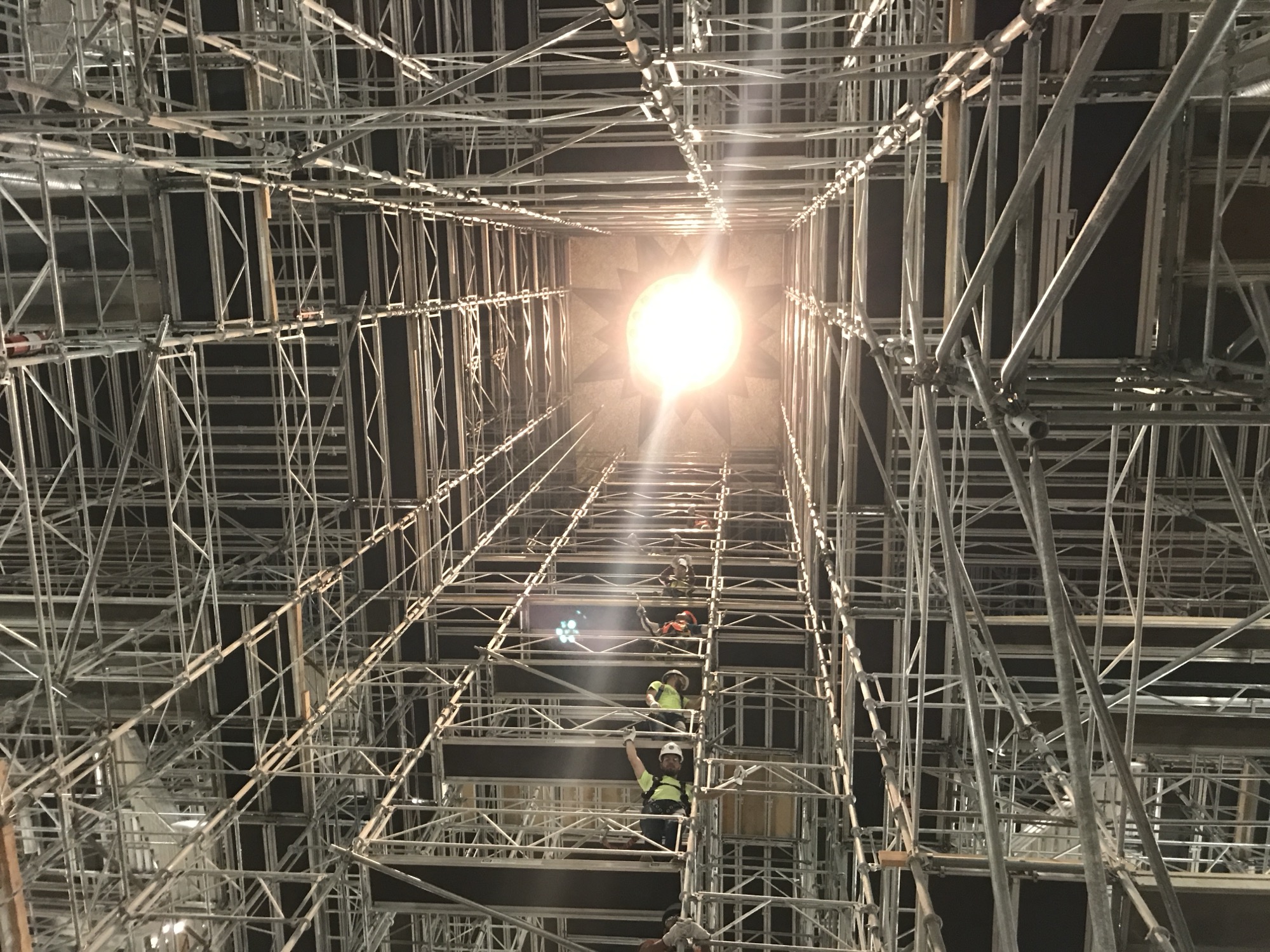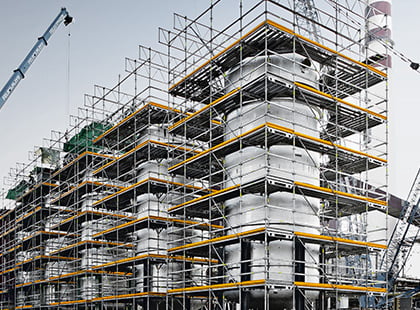The Advantages of Scaffolding for Safety And Security and Performance in Building Projects
Scaffolding is an important element in the realm of construction, dramatically adding to both safety and functional effectiveness. The effect of scaffolding extends past basic security steps; its strategic execution can transform task timelines and results (Scaffolding).
Enhanced Worker Security

Enhanced worker security is an extremely important issue in the building and construction sector, where the risks related to falls and mishaps can have alarming effects. Effective scaffolding systems play a vital duty in reducing these dangers by supplying steady systems for employees at raised heights. By guaranteeing that scaffolding is appropriately put up and kept, construction companies can substantially lower the likelihood of falls, which are among the leading causes of work environment injuries and deaths.
Additionally, scaffolding boosts safety and security through its design features. Guardrails, toe boards, and non-slip surfaces contribute to a secure working environment, reducing the risk of mishaps. Furthermore, scaffolding enables workers to gain access to hard-to-reach areas without the requirement for makeshift services, which can jeopardize safety criteria.
Educating employees on the appropriate usage of scaffolding is similarly essential. Guaranteeing that personnel are well-informed about load capacities, setting up treatments, and security protocols further enhances the performance of scaffolding in protecting against mishaps. To conclude, integrating robust scaffolding systems within construction tasks not just improves employee safety and security however also advertises a society of safety that profits the whole workforce while boosting general productivity.
Improved Accessibility and Flexibility

Additionally, scaffolding permits the practical transportation of materials and tools, reducing downtime related to moving tools. Employees can effectively access various locations of a job, which is especially crucial in complicated builds where upright and horizontal movement is frequent - Scaffolding. This ease of access not only streamlines operations yet additionally makes it possible for groups to respond rapidly to changing task needs
In addition, scaffolding can be tailored to accommodate specific website problems, improving movement in uneven or tight spaces. This flexibility makes certain that building and construction activities can proceed efficiently, no matter the challenges offered by the setting. By promoting enhanced access and mobility, scaffolding plays an essential duty in sustaining construction crews and maximizing the general efficiency of building tasks.
Enhanced Task Effectiveness
In construction, task efficiency is significantly affected by the effective use scaffolding systems. By offering a secure and steady platform for workers, scaffolding minimizes downtime and speeds up the rate of building tasks. With enhanced accessibility to elevated workspace, teams can finish tasks a lot more quickly, minimizing the total task timeline.
The modular nature of contemporary scaffolding enables for rapid assembly and disassembly, allowing swift changes between different stages of a project. This versatility not just enhances workflow however additionally adds to much better control among different professions, as safety service scaffold multiple teams can function simultaneously on different sections of a framework.
Furthermore, scaffolding guarantees that workers are located correctly to perform their tasks without unnecessary stress or threat of injury, thereby decreasing the probability of crashes that can bring about costly hold-ups. Enhanced precaution embedded in scaffolding systems, such as guardrails and toe boards, additional assistance effective procedures by keeping employee concentrate on the job at hand instead of safety concerns.

Flexibility for Various Tasks
Scaffolding systems stand apart for their flexibility across a vast array of construction jobs, efficient in meeting particular website needs and tasks. Their modular style permits for fast adjustments to fit different structure kinds, from domestic to industrial frameworks, ensuring that workers have risk-free gain access to at various elevations and angles.
These systems can be customized for varied applications, such as façade job, indoor improvements, or heavy-duty industrial projects. For circumstances, light-weight light weight aluminum scaffolds are excellent for interior work, while robust steel frameworks provide the required support for massive construction. The flexibility of scaffolding includes its capability to be set up for both long-term and momentary structures, enabling professionals to effectively plan and execute their tasks.
In addition, scaffolding can be used in tough atmospheres, including urban setups where room is restricted or on unequal terrain where typical accessibility options are unwise. This flexibility decreases the demand for several access solutions, lowering expenses and project timelines. By suiting a selection of tasks and problems, scaffolding boosts the total performance and effectiveness of building efforts, showing to be an important asset in the structure industry.
Conformity With Security Standards
Just how can construction projects make sure the safety and security of workers while maintaining performance? Conformity with security standards is vital in achieving this equilibrium. Regulatory frameworks, such as OSHA in the United States, give guidelines that govern the use of scaffolding, making sure that it fulfills strict safety criteria. By adhering to these criteria, construction firms can reduce the threat of crashes, which my response not just shields employees yet also enhances total project effectiveness.
Appropriate scaffolding layout and installment play a vital duty in conformity. Scaffolds have to be created from premium products and created to hold up against the specific loads they will experience. Routine assessments and upkeep are vital to make certain that these frameworks stay secure throughout the task period. Educating employees on secure scaffold usage and the value of conformity with security requirements even more strengthens a culture of safety on-site.
Additionally, documentation and record-keeping pertaining to safety and security assessments and worker training are vital. These techniques not just demonstrate compliance yet likewise provide liability and transparency. Inevitably, by prioritizing adherence to safety criteria, building and construction jobs can foster a more secure work environment, consequently enhancing performance and performance without jeopardizing worker safety and security.
Conclusion
In verdict, scaffolding offers as a vital element in structure tasks, significantly improving security and performance. Adherence to safety and security criteria underscores the significance of scaffolding in accomplishing successful job results, making it crucial in the construction industry.
Scaffolding is a vital element in the world of building, substantially adding to both safety and security and functional performance. The influence of scaffolding expands past fundamental security procedures; its calculated application can change job timelines and results. In final thought, incorporating robust scaffolding systems within construction tasks not just boosts employee security but also advertises a society of safety and security that benefits the whole labor force while enhancing overall productivity.
In final thought, scaffolding serves as an important component in building tasks, dramatically improving security and efficiency. Adherence to safety and security criteria highlights the significance of scaffolding in achieving effective job outcomes, making it crucial in the building and construction market.